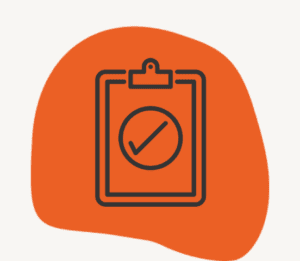Synthetic plastic. It’s both the wonder material that has revolutionised the product production landscape since it was first pioneered by Belgian chemist Leo Baekeland in 1907, and simultaneously one of the biggest blights on the planetary landscape since the mass adoption and acceleration of the plastics economy in the mid-twentieth Century.
Since 1964 plastics production has increased twenty-fold. Further figures show that global plastic waste generation more than doubled from 2000 to 2019 to 353 million tonnes.
At least 14 million tons of plastic end up in the ocean every year choking up our waterways and presenting a considerable threat to human and marine health via the ingestion of microplastics.
In the UK 2.7 billion items of single-use cutlery — most of which are plastic — and 721 million single-use plates are used per year, according to statistics from Department for Environment Food and Rural Affairs (Defra). The same figures also reveal that, shockingly, only 10% of this figure is successfully recycled.
The above means the appetite for a plastic-free world is growing with a survey conducted by Ipsos, in conjunction with Plastic Free July 2022, finding that an average of three-quarters of people across 28 countries agree that single-use plastic should be banned as soon as possible. In Britain this came in at a higher-than-average 80%.
It’s small wonder then that the government is introducing a single-use plastics ban from October 1st in England. This follows the introduction of similar bans in other parts of the UK: including Scotland (the first UK nation to ban the ‘most problematic’ single-use plastics on 1st June 2022) and Wales (introduced in phases from Autumn 2023).
The ban also comes into force around 18 months after UN member states agreed on the adoption of a mandate for an International Negotiating Committee (INC) to develop a legally binding UN Treaty on plastic pollution.
So what will the ban mean for event teams and the suppliers they work with? We explore exactly this below.
England’s single-use plastic ban: what’s included
From the 1st of October 2023 businesses must no longer supply, sell or offer certain single-use plastic items including the following:
- Balloon sticks: polypropylene 1
- Cups: polypropylene, polystyrene, PET and it’s recycled equivalent rPET
- Cutlery: polypropylene or polystyrene
- Plates/bowls: polyethylene terephthalate or polystyrene
- Stirrers: polypropylene or polystyrene
- Single-use plastic packaging (e.g. cling film): low-density polyethylene
- Ready-to-consume food and drink containers*: polystyrene
While the word ‘ban’ sounds all encompassing there are a number of exceptions to the above. Take the last item* on the above list as a case in point, with the ban still allowing for them to be used if further preparation is needed before consumption. Examples include:
- adding water
- microwaving
- toasting
You can see further exemptions to the ban outlined by the government here.
England’s single-use plastic ban: what can I do to prepare?
With just over three months until the single-use plastics ban comes into effect there is much that event teams can do to ensure they’re in the best possible position to make a smooth transition.
The good news is that many event businesses, including those that are members of isla, have put sustainability at the forefront of both event design and execution, and that includes applying the seven principles of the circular economy (redesign, reduce, reuse, repair, renovate, recycle and recover) to reduce plastic and other waste.
1. Use up your existing stock
If you have bulk bought any of the single-use plastic items cited above, work with your operations team and fulfilment teams to find the best ways of using up this stock ahead of the October 1st deadline.
2. Speak to your suppliers about alternatives now
There’s no time like the present to speak to your event suppliers, particularly caterers and venues, about alternatives to single-use plastics. And there are plenty of them. From biodegradable serveware to beeswax wraps, and metal straws, the options are endless. At our forthcoming member update at The Meetings Show we’ll be turning to eco-tableware brand Stroodles, for their 100% biodegradable and edible cups and stirrers in sweet and savoury flavours, pairing them up with our refreshment offering.
Hiring glassware or asking event attendees to bring their own water bottles to use at venue refill stations is also a simple solution that many of you may already be utilising.
The cost and individual carbon footprint of individual alternatives, as well as client requirements will all need to be factored into the making the above choice. Our recently released temperature check report, which looks at sustainable progress in the UK events industry, showed that single-use bamboo or wood had significantly higher carbon dioxide equivalent (CO2e) missions per kg when compared to both compostable serveware and single-use plastic.
3. Remember to consider end-of-life when choosing alternatives
When choosing a plastic alternative, you also need to consider the ease of logistics regarding their end-of-life. As an example, compostable items, such as compostable cutlery, can be problematic due to a widespread lack of awareness and education as to what they’re made of and how to dispose of them.
If using them, you need: i) a separate, clearly communicated, waste-stream on-site – so they don’t contaminate other waste streams, and; ii) to know their end-of-life destination – the vast majority of waste facilities do not have the correct machinery to industrially compost these items – and the vast majority of ‘compostables’ require an industrial composting process to decompose effectively.
4. Look at previous wins when it comes to plastic alternatives
While it can be daunting to think about the ban and implications for your event team and the businesses you work within, why not draw on the success of utilising alternatives to plastics in other areas of your event delivery for inspiration? Have you switched from physical to digital signage, such as with Factory 42 and the BBC Green Planet AR Experience, or used innovative attendee giveaways including seed packets or sustainable snacks as an alternative to traditional SWAG?
You may be able apply any of the lessons learned from the above on your journey to going single-use plastic free.
5. Get inspired by the example of plastic-free communities
There are a staggering 908 communities across the UK that have signed up to become plastic-free communities, as part of an initiative set up by grassroots marine conservation charity, Surfers Against Sewage. These are living, breathing examples of communities working together to bring together to tackle plastic pollution at its source, lobbying for far reaching change at individual, business, local government and even at brand level.
6. See the impact of plastic pollution first hand
If you, or your organisation, are still struggling to absorb the full impact of single-use plastics then a company volunteering day as part of the Great British Beach Clean (15th – 24th September) is a great way to bring the message home. Figures show that during the 2021 Great British Beach Clean, a staggering average of 112 plastic/polystyrene pieces were found per 100 metres of beach!
Additional resources:
Our latest news













